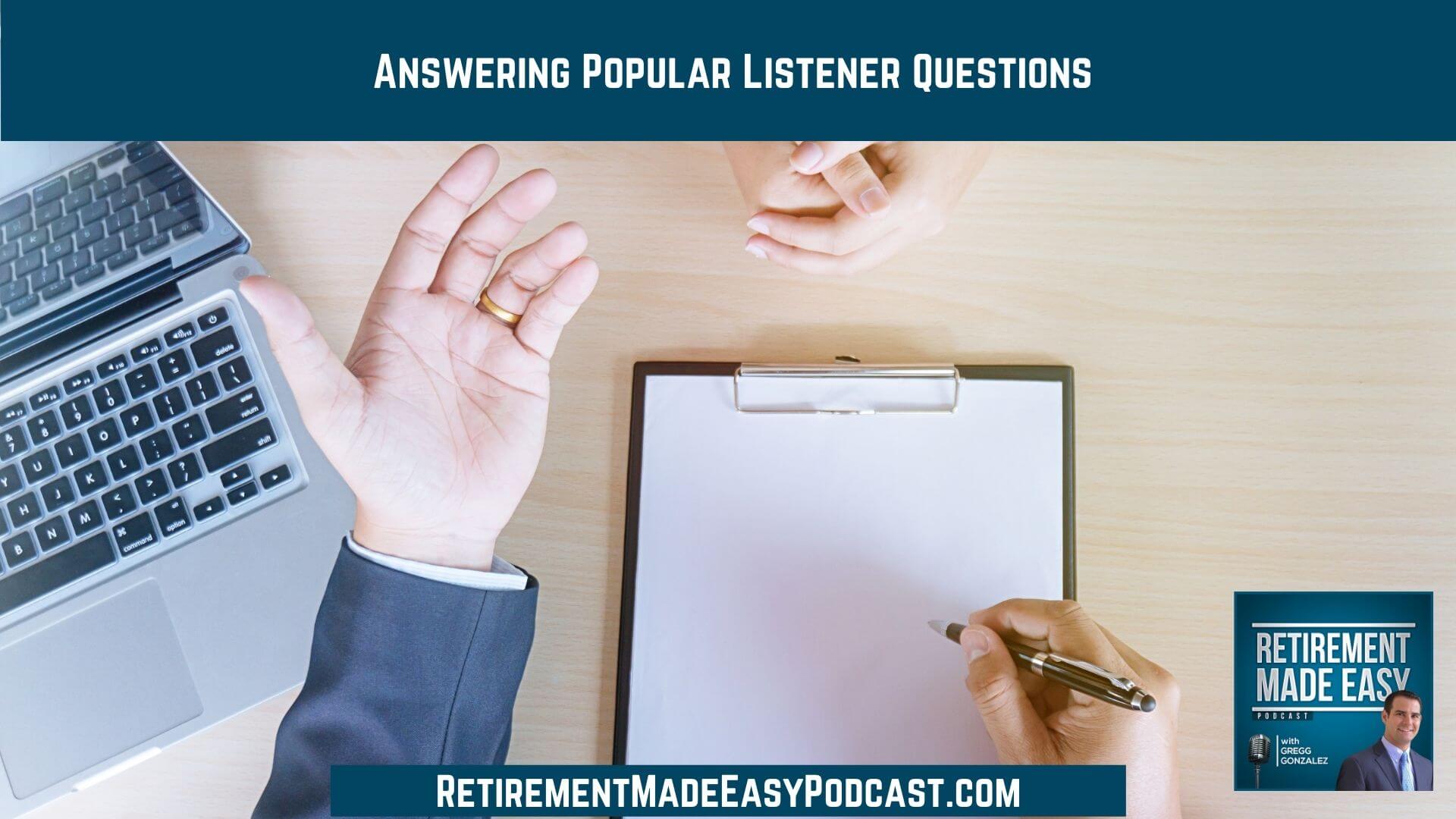
This episode of the Retirement Made Easy podcast is a mix of the old and the new. I revisit some listener questions that are currently relevant as well as answer a NEW question that’s debunking a once-popular social security disbursement method. What is it? You’ll have to give this episode a listen to learn more.
You will want to hear this episode if you are interested in…
- [1:40] Get your FREE pre-retirement assessment
- [2:15] Question #1: Debunking the “file and suspend” disbursement method
- [6:07] Question #2: Required minimum distributions and Roth conversions
- [7:18] Question #3: Do you take the lump-sum pension or monthly checks?
- [10:16] Question #4: What’s the best way to pay for Medicare part B?
- [13:45] Question #5: Should you invest in Series I Savings Bonds?
- [16:03] Question #6: What an inheritance means for your retirement
Debunking the “file and suspend” disbursement method
After doing some research, Paul concluded that filing and suspending his benefit at his full retirement age would be the best scenario for him. Why? At any point after full retirement, he could go back to social security and say he messed up and wanted to claim his benefit at his full retirement age. What would happen? They’d write him a check for a lump sum for the difference of those years.
Here’s the problem with the file and suspend method: The Bipartisan Act of 2015 eliminated the lump sum option. Now, if you file and suspend, they will NOT write you a lump sum. While this idea doesn’t work anymore, we’ve certainly used this method in the past.
Another popular loophole was to file a restricted application for your spouse. If Paul’s benefit was $3,000 and his wife’s was $2,000 a month, Paul could file a restricted application. His wife would still get the $2,000 but he’d get half of her benefit—$1,000. Then, he’d let his own benefit defer until age 70 and collect it when it’s higher. Unfortunately, this strategy was also done away with because of the 2015 Bipartisan Act.
Do you take a lump-sum pension or monthly checks?
This particular listener is worried her husband’s pension won’t be there down the road because her uncle’s pension went bankrupt. She thinks he should take the lump sum because they don’t need the monthly income. Why? They can live comfortably on social security. What should she do?
Firstly, I’d like to point out that I need more information. I’d want to see how well-funded the pension is and whether or not it offers a partial lump-sum option. If so, you could still get the monthly check and then roll the lump sum into a Roth IRA.
Secondly, what other retirement resources do you have? If you don’t have enough saved for retirement and are relying on social security and this pension, then you’ve got liquidity concerns and it makes sense to take the lump sum. You have to invest the money to make sure it lasts as long as you do.
Listen to hear what else I think you need to consider when it comes to pensions.
How to pay for Medicare part B if you delay social security
This listener wants to delay their social security until age 70. He’s currently 63 and wants to retire at 65 and jump on Medicare. What’s the best way for him to pay for medicare part B if he’s delaying social security disbursements? The Medicare part B premium is income-abased. For most people, it will start at $148.50 per month. It comes out of your social security benefit.
The cost of Medicare Part B is increasing to $170.10 in 2022 (increasing 14.5%). What do I recommend? Take advantage of an HSA. Build that up prior to retirement and use it to pay for Medicare part B premiums, dental and vision expenses, deductibles, copays and coinsurance, medicine, and more. I understand that not everyone has access to HSAs but if you do, take advantage of it. Should you choose a medicare supplement or advantage plan? Listen to hear my thoughts.
Question #5: Series I Savings Bonds
We talked about using Series I Savings Bonds to be a hedge against inflation in episode #91. Through April 2022, the interest rate is set at 7.12%. Should you consider it for an emergency fund? That’s completely up to you. The interest rate is based on inflation (which is through the roof this year) and is paid every 6 months. Sometime in April, they’ll announce the next interest rate. Series I Savings Bonds are limited to $10,000 per person, so a couple could invest up to $20,000. Check out the treasury website to learn more! Listen to the whole episode to hear all of the questions!
Resources & People Mentioned
Connect With Gregg Gonzalez
- Email at: Gregg@RetireSTL.com
- Podcast: https://RetirementMadeEasyPodcast.com
- Website: https://StLouisFinancialAdvisor.com
- Follow Gregg on LinkedIn
- Follow Gregg on Facebook
- Follow Gregg on YouTube



